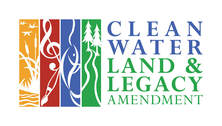 How many scythes should a museum, located in the heart of farm country, have in its collection? Pope County Historical Society Collections Manager Ann Grandy pondered this question in a blog post entitled, "The Size of Our Scythes Makes Me Sigh." There's the one on exhibit (photo at left): "This strikingly beautiful tool was critical in the early years of Pope County when wheat was king. As the blade mowed the stalks of grain, the long fingers caught the stalks and laid them down in an orderly fashion. This made the threshing process much easier. It is an elegant and well balanced tool. Is it important for us to have a cradle scythe in our collection? ABSOLUTELY!" Grandy writes. But PCHS has four more in storage, she noted: "We have 5. Yep 5. And that isn’t counting the plain scythes without the extra fingers to catch the stalks. These things are BIG. And dangerous with the long blade." Museums do not have unlimited storage. PCHS is among several museums around the state that are completing collections inventories and reassessing how many scythes - or ox yokes, wedding dresses, carpenter planes and other commonly donated artifacts - are needed to tell a community's history. Before getting rid of duplicates, however, what do museums need to consider? What are the legal implications? And what should be done with the deaccessioned items? Grandy and four collections colleagues will answer those questions and more in a session at the 2017 MALHM Annual Meeting and Conference, titled "Deaccessioning: Considerations from the Field": At some point or another, every historical society will have to engage in deaccessioning. With this in mind, five museum professionals are coming together to share their thoughts, experiences, and considerations on how to make deaccessioning collections easier for our colleagues and an easier practice in the field itself. The session will begin with the basics of deaccessioning – what it is, why we do it, and how we do it. Special attention will be given to how NAGPRA laws and culturally sensitive items affect local museums and what should be done at each museum with these collections. The discussion will also cover obsolete media formats in the collection and the importance of reappraisal of items. Real-life experiences will be shared regarding what can be done with items after they are removed from the collection from the perspective of what has worked and what has not worked at a local museum. And finally, the link between accession and deaccession will be considered as well as how collections practices have and will continue to change deaccessioning. Presenters:
When MALHM staff traveled around the state this fall to regional history group meetings, many groups requested a conference session on this topic. Thanks to these presenters for coming through! Register now! Registration is now open for the MALHM Conference, set for April 26-27 in Walker, MN. Register through our new online store. Attendees may also pay with a registration form and check by mail. With either method, attendees can indicate dietary needs, such as vegetarian and gluten free. Registration deadline is April 10. Chase on the Lake will offer a discount to MALHM attendees who book by phone by April 4. For more information, see our Annual Conference page. If you have additional questions, please contact MALHM Coordinator Marci Matson or Conference Chair Jill Wohnoutka. Look for a full conference schedule soon!
0 Comments
Leave a Reply. |
Archives
December 2019
Categories
All
|
Minnesota Alliance of Local History Museums: Peers Helping Peers Since 1991
|
General contact:
Liz Koele, Alliance Coordinator [email protected] 75 W 5th St #400 St Paul, MN 55102 612-500-7460 |
© COPYRIGHT 2023. ALL RIGHTS RESERVED.
This project has been financed in part with funds provided by the State of Minnesota from the Arts and Cultural Heritage Fund through the Minnesota Historical Society.
|
 RSS Feed
RSS Feed

